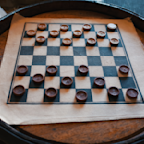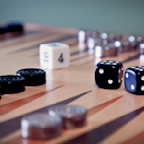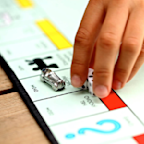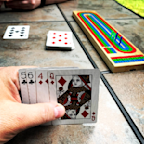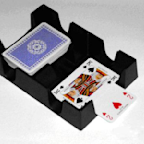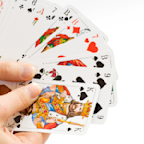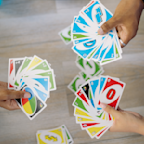Search results
Go is an abstract strategy board game for two players in which the aim is to fence off more territory than the opponent.
- Joseki
In go, because games typically start with plays in the...
- Four Arts
The four arts (simplified Chinese: 四艺; traditional Chinese:...
- Rules of Go
The rules of Go govern the play of the game of Go, a...
- Joseki
The rules of Go govern the play of the game of Go, a two-player board game. The rules have seen some variation over time and from place to place. This article discusses those sets of rules broadly similar to the ones currently in use in East Asia. Even among these, there is a degree of variation.
- Overview
- Setup
- Strategy & Terminology
- Gameplay
Believed to be at least 2,500 years old, Go is one of the oldest board games in the world. It’s the ultimate game to engage your mind, and while it might seem a little confusing at first, it’s actually super easy to learn! In this article, we’ll walk you through the ancient art of Go so you can play with everyone you know.
19 x 19 Go game board
(181 black stones and 180 white stones)
Control the most territory on the board & capture your opponent’s stones.
Set out the Go board and distribute the stones.
19 x 19 Go game board
in between the players. Choose who wants to play as black and who wants to play as white, then distribute the
181 black stones to one player and 180 white stones to the other. Traditionally, the most experienced player uses black stones and goes first.
For beginners, start learning the basics on a
, then move up to a
Try to control more area on the board than your opponent.
The main objective of Go is to control more territory than your opponent by enclosing areas on the board with your stones. Territory includes empty intersections that are bordered by stones of the same color, as well as intersections that are surrounded by the same colored stones and the edges of the board. Each empty intersection within your territory is worth one point (or moku).
To conceptualize the game, think of the board as an island where both players want to claim as much land as possible.
If a player places a stone inside their own territory, they lose a point.
Surround your opponent’s stones to capture them as “prisoners.”
Form strings around the board to shape and claim your territory, and surround your opponent. Once you fill all the adjacent intersections around your opponent’s stones, remove them from the board and keep them in a separate pile. These captured stones are called “prisoners,” and they are worth one point each, on top of the point you receive from each empty intersection.
Take turns placing a stone on the intersection of the board.
After choosing your stone color and agreeing on the number of compensation or handicap points, place a stone on an intersection of a grid line—not inside an empty square on the board. Alternate putting down stones with your opponent, with the goal of gaining more territory on the board.
Intersections also include the T-shaped crossings at the edges of the board.
Your stones will not move unless your opponent surrounds and captures them.
This first move stakes out which side you want to claim. Traditionally, black places their stone in the upper right hand quadrant.
In a handicap game, the weaker player goes after the stronger player puts their stones on the star points of the board.
Feb 8, 2019 · Go is an abstract strategy board game for two players, in which the aim is to surround more territory than the opponent. The game was invented in China more than 2,500 years ago and is believed to be the oldest board game continuously played to the present day.
go, board game for two players. Of East Asian origin, it is popular in China, Korea, and especially Japan, the country with which it is most closely identified. Go, probably the world’s oldest board game, is thought to have originated in China some 4,000 years ago.
- The Editors of Encyclopaedia Britannica
The game of Go has simple rules that can be learned very quickly but, as with chess and similar board games, complex strategies may be employed by experienced players.
People also ask
When does a game of go end?
How complex is the game of go?
Is go a good game?
Is go a universal game?
Go is a board game for two players. It is called Wei-k'i (or Wei-chi) in Chinese, Patok or Baduk in Korean and I-go in Japanese. [1] Go is played on a board with black and white game pieces called stones. Players take turns placing a stone of their color on intersections of a 19x19 square grid. The player with the black stones goes first.



